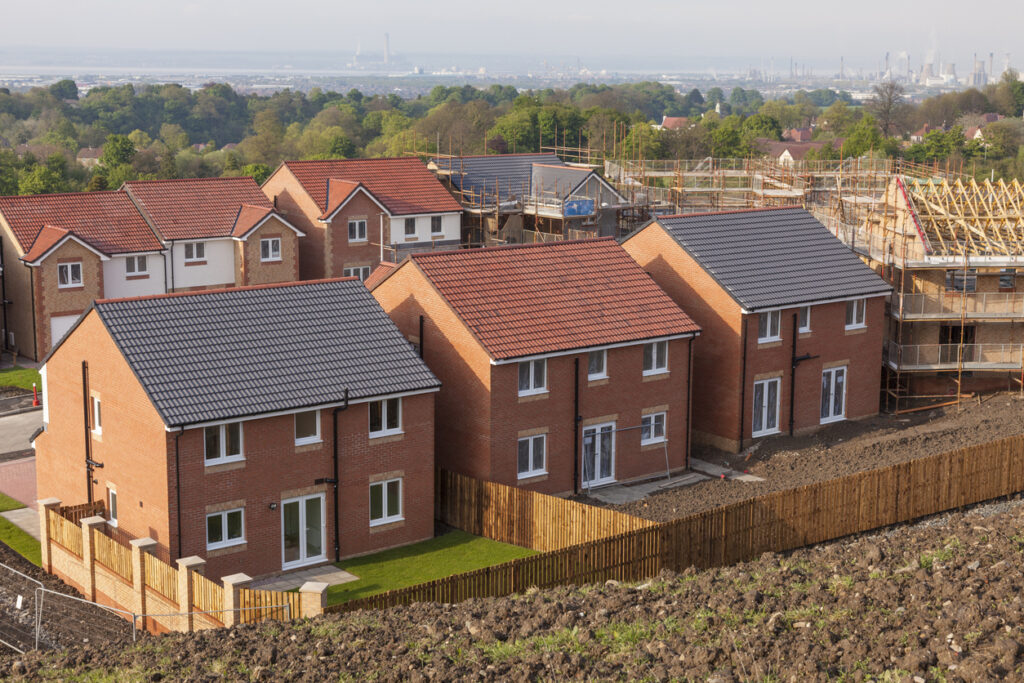Share This
Finally, nearly five years on from the tragedy at Grenfell in 2017, the Building Safety Bill has received Royal Assent, providing the construction industry with the Building Safety Act 2022 (“the Act”). The 262 page act is the first step towards lasting change in the construction industry, and the safety of dwellers across the UK for years to come. The various parts of the act will be implemented into law in stages over the next few years.
This update is the second in our series (our first having provided an introduction to the act here) and will provide a whistle stop tour of what we consider to be the key provisions of the act for house builders and their potential ramifications. Certainly, some of the new provisions have the potential to shock the construction and development industry given the significant changes involved.
Key provisions of the act
The act primarily applies to England, with certain provisions also applying in Scotland, Wales and Northern Ireland.
1. Stages of Project Management – the three ‘gateways’
The act has established three main ‘gateways’ that must be considered and satisfied during the design and development of higher-risk buildings (which is a building in England that is at least 18 metres in height or has at least seven storeys, and is of a description specified in regulations made by the Secretary of State (which hasn’t been specified as of yet)). These ‘gateways’ are used to determine whether a building can be occupied. The ‘gateways’ are:
-
Planning – At this stage, applicants for planning permission must satisfy that they have considered wider issues in relation to fire safety through the production of a fire safety statement. As such, fire safety considerations can no longer be an afterthought, but instead a decisive factor in relation to the construction of the building.
-
Pre-Construction – The regulator (which is the HSE as the Building Safety Regulator ‘the Regulator’) must be satisfied at this stage that the planning proposals comply with Building Regulations and address how a ‘golden thread’ of important safety information will be held as well as any other safety management expectations.
-
Completion – The regulator is given the opportunity to assess and determine whether the works to the high-risk building have been carried out in accordance with Building Regulations, and proceed to undertake a review of the completed works. If satisfied on all fronts, the regulator will then issue a completion certificate and the building will then be registered on the system. This must happen before any building can be occupied.
These ‘gateways’ are an essential requirement introduced by the act which create a necessary focus on safety management from the get go.
2. Defective Premises Act 1972 (DPA) – Scope and Limitation
Currently, the DPA imposes a duty on those involved in building and designing new dwellings to work in a professional or workmanlike manner, to use proper materials and to see that the completed dwelling is fit for habitation. This duty is owed by all persons taking on such works and clearly extends to house builders.
The act introduces two fundamental changes to the DPA.
-
The act has widened the scope of the DPA to include refurbishment and rectification works which were otherwise excluded, providing those who are doing the work are doing so in the course of business. This ensures that the duties under the act apply to a wider scope of works, therefore providing a higher level of protection to occupants. This will only apply going forward (prospectively).
-
The act extends the limitation period under the DPA (which is expected to come into force within the next two months):
- From the original six years to a much longer period of 15 years for those claims which arise after the act comes into force); and
- From six years to an astonishing 30 years for claims which arose before the act became law.
This is a significant change from the previous six year limitation period, and should be recognised as an important shift that could have an array of potential ramifications that boil down to even the simplest of issues, such as the way in which project records should be kept.
3. Building Safety Levy
The act provides a new power to the Secretary of State to introduce a charge that will be payable by any developer when seeking permission to develop certain high-rise buildings. This charge is referred to specifically as the Building Safety Levy.
This levy will become payable at gateway 2, the pre-construction phase, and acts as a further incentive for developers to comply with the various safety requirements introduced by the act.
4. Building Liability Orders
The principle of a Building Liability Order was only introduced as a concept late in the day.
It was introduced to address the possibility that certain developers might escape civil liability for safety defects because they had carried out the works using a special purpose vehicle (SPV) or shell company.
Its effect is that the act will grant a power to the High Courts to allow them to extend specific liabilities for one company to any other associated companies and make them liable. The High Courts will have the power to do this where it considers that it is ‘just and equitable’ to do so.
In practice, this may have the effect of piercing the corporate veil, which is a significant development and potentially a worrying time for those developers that operate using SPVs.
Conclusion
The act will have far reaching consequences for house builders, particularly as it will be necessary to:
-
Ensure that it understands the requirements that will be necessary to ensure compliance under the three ‘gateways’, as well as factor in the building safety levy into its build cost analysis that will payable at gateway 2.
-
Ensure that its document retention policies are amended to take into account the changes to the limitation periods under the DPA. For those developments that may be subject to the retrospective limitation period change, house builders should ensure as far as possible to retain any relevant project records.
House builders will also need to consider the effect that building liability orders may have on its approach to procurement, although how this will operate in practice remains to be seen.
Moving forwards, we will keep you updated on when the various parts of the act will be implemented into law and any notable examples of the act in operation.
Get In Contact
Kate’s focus is on preventing disputes where possible and seeking commercial resolutions which align with her client’s goals when disputes do arise.









